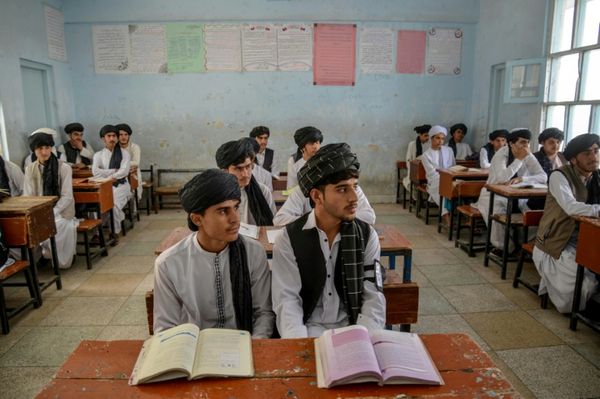
New equity index is to target the needs of today's school children, rather than ranking schools according to out-of-date Census data.
Analysis: Many of the Papatoetoe High School staff were still at work late yesterday, when principal Vaughan Couillault left his office to coach football. They were marking, prepping, fundraising for a drama trip to Wellington, or supporting the First XIII team in a tough match against St Paul's.
"We were respectfully getting battered," he laughs. "We're not bad, but they are known for their league programme."
As at so many schools, the teachers live and breathe education, Couillault says. "Bloody oath! There isn't too much downtime in the life of a teacher."
According to Papatoetoe's last Education Review Office report, its learners achieve "very well". "Students show a strong sense of belonging and contribute to the wider life of the school through sports, cultural activities, leadership and service," it says.
Yet the high school sees some local parents choosing to send their kids across town to schools in more affluent, leafy green neighbourhoods. It suffers the stigma of its low decile ranking; misguided parents see the 1-to-10 decile rankings as markers of educational quality; in fact research shows the reverse is more often true. Students' achievement improves faster at good schools in lower socio-economic communities, albeit from a lower starting point.
"All I've ever wanted in education across the country is for the person who lives up the street to know when they send their children to my school, their kids will get a good deal and they don't have to blow 10 grand on buses," Couillault says.
In today's Budget, Newsroom expects the Government to announce it's finally scrapping the flawed decile funding system. That's the culmination of good work by three Ministers of Education: first National's Hekia Parata, then Nikki Kaye, and now completed by Labour's Chris Hipkins.
The problem is not just the misplaced stigma. The metric is also slow and clunky; schools are funded according to a decile band derived from desperately outdated Census data that counted the households with school-aged children in their catchment area. Right now, your child's school is crudely funded according to how many local kids lived in crowded or benefit-dependent households on Census Day 2013.
For the past couple of years the Ministry of Education has been trialling a new equity index, assessing real live students anonymously against 37 markers. It's been tested in programmes like Ka Ora Ka Ako that has delivered more than 45 million healthy school lunches to 211,000 learners at 921 schools, including Papatoetoe. "Where they've used the equity index to deploy funding, it appears to have landed well," Couillault tells me.
The effect of the new funding system won't be just to distribute the money differently. The Government would face a PR disaster is some schools were to come out worse off. So the government won't just re-cut the pie, it will also increase the size of the pie.
The finding change won't get unequivocal support from schools.
Moreover, city schools are becoming ever more tightly zoned. So the Government needs to reassure parents that their children don't face a postcode lottery in their education – that the schools are as good in Takanini as they are in Takapuna; as strong in Phillipstown as they are in Fendalton.
To this extent, school funding will be aligned with the big-ticket item in today's Budget ... funding the reform of the health sector. The new Health NZ and Māori Health Authority is intended to provide good healthcare to those who need it most, regardless of who they are or where they live. That was signalled last month with a plan to cut hospital waiting lists, even if that means flying surgeons around the country to where they're needed most.
So too when teens leave school for vocational training. The Reform of Vocational Education will bring together on-the-job training with polytechs, universities and private training establishments in a single funding system, also expected to be announced today.
The intent of unified funding is laudable; the danger is that such centralised models lack the on-the-ground insight and flexibility to response to more local needs.
► Update: The Papatoetoe First XIII fought back to cut their losing margin to just six points at the final whistle, Vaughan Couillault reports.







